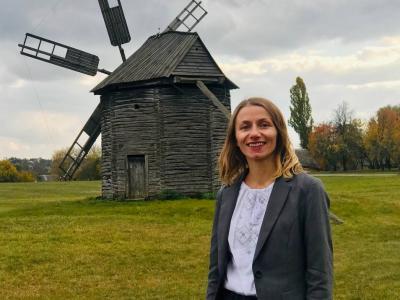
Dr Kateryna Budz is a Combe Trust Fellow at IASH from September 2022 to February 2023.
My IASH project, “The Ukrainian Greek Catholic Church in Galicia (1946–1968): Strategies of Survival and Resistance in the Underground,” explores the ways in which the clandestine religious community re-defined its identity in the new surroundings.
The largest Eastern-rite Catholic Church, the Ukrainian Greek Catholic Church (UGCC) had more than 4 million believers at the eve of the Second World War. This Church was the main national and religious institution for Ukrainians in the West Ukrainian region of Eastern Galicia.
During the war, Eastern Galicia, a part of Poland during the inter-war period, came under Soviet rule. In 1946, the Soviet regime officially abolished the UGCC through its allegedly voluntary “reunion” with the Russian Orthodox Church (ROC).
Under state pressure, most parish priests formally joined the ROC. In contrast, the Greek Catholic hierarchy as well as a part of the clergy refused to follow the state scenario of “reunion” despite arrests and persecutions.
The project focuses on the strategies of survival and resistance employed by the Ukrainian Greek Catholics who did not “reunite” with the ROC and went underground. On the one hand, the members of the outlawed Church tried to accommodate to the Soviet reality. On the other hand, they employed multiple strategies of resistance, ranging from legal forms of protest to outright confrontation with the representatives of the Soviet state.
Oscillating between survival and resistance in relation to the Soviet state, clandestine Greek Catholics preserved their national and religious identity in the underground up to legalization of the UGCC in 1990.
The project builds upon my doctoral dissertation on clandestine Ukrainian Greek Catholics in the Soviet Union.
